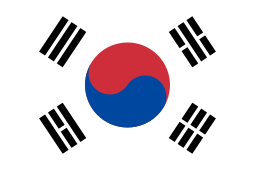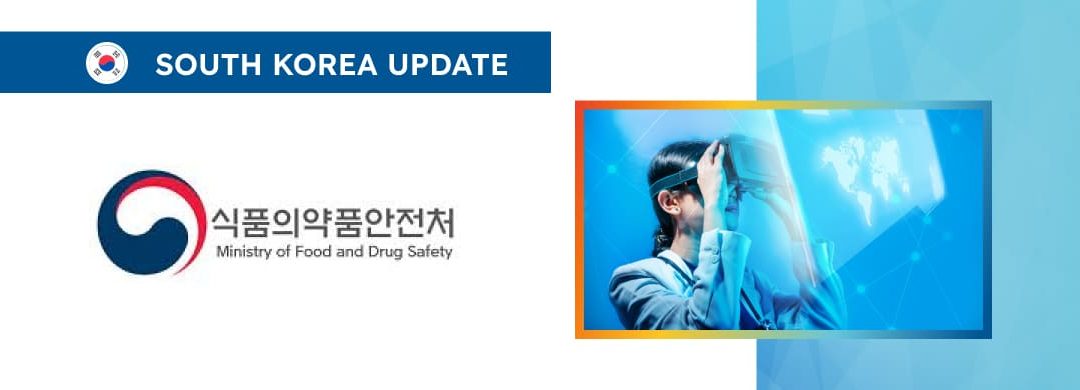The article provides a brief overview of the applicable regulatory requirements set forth under the existing legal framework.

Table of content
The Ministry of Food and Drug Safety (MFDS), a Korean regulating authority in the sphere of healthcare products, has published a guidance document dedicated to the regulatory procedures to be followed in the case of innovative medical devices. The document provides an overview of the applicable regulatory requirements set forth under the relevant legislation, as well as additional clarifications and recommendations to be taken into consideration by medical device manufacturers and other parties involved in order to ensure compliance.
At the same time, the authority reserves the right to make changes to the guidance and recommendations provided therein, should such changes be reasonably necessary to reflect corresponding amendments to the underlying legislation.
Introduction
The document outlines the framework for the designation and evaluation of “Innovative Medical Devices” under the “Medical Device Industry Promotion and Innovative Medical Device Support Act” (implemented in May 2020). The primary goal of the said act is to streamline the development and deployment of medical devices that utilize cutting-edge technologies, such as:
- Information and Communication Technology (ICT)
- Biotechnology
- Robotics and wearable devices
Innovative medical devices are defined as those that significantly enhance safety and efficacy compared to existing medical practices. This designation aims to expedite market entry for new technologies while strengthening the competitiveness of the domestic medical device industry and contributing to public health improvements.
Key objectives:
- Facilitate early-stage market entry by simplifying regulatory processes.
- Reduce review timelines and integrate evaluations across multiple agencies.
- Support national health initiatives for rare and complex diseases.
The document also provides definitions of the key concepts and terms, such as:
- Innovative Medical Device: a medical device that applies advanced or novel technology or improves usage to enhance clinical outcomes.
- Innovative Medical Device Group: devices are classified into one of four groups:
- Advanced Technology Group: high-tech, rapidly advancing technologies.
- Medical Innovation Group: devices that significantly improve existing medical methods.
- Technological Innovation Group: devices for which key technological components require urgent development.
- Public Healthcare Group: devices addressing public health needs, such as rare and hard-to-treat diseases.
According to the guidance, currently, the designation and evaluation process is governed by the following regulations:
- Medical Device Industry Promotion and Innovative Medical Device Support Act.
- National Health Insurance Act and associated regulations.
- Regulatory guidelines on reimbursement eligibility and new medical technology assessments.

Innovative Medical Device Designation System
As explained by the authority, the designation system categorizes medical devices as either subject to an Integrated Review System or a General Review System.
Implemented in October 2022, the integrated review system streamlines evaluations by conducting concurrent reviews of key regulatory aspects, such as:
- Designation of Innovative Medical Devices.
- Reimbursement Eligibility Assessment.
- Evaluation of Clinical and Technological Innovation.
As it is mentioned in the guidance, the integrated review significantly reduces time-to-market from up to 390 days to 80 days.
The general review system applies to devices at different stages of development. It includes options for:
- Priority Review: fast-tracks the evaluation of innovative products.
- Phased Evaluations: gradual reviews based on the readiness of the documentation.
This system provides flexibility, allowing manufacturers to submit devices for evaluation even if development is incomplete.
In order to advise further on the aforementioned systems, the guidance provides a comparison based on the key aspects.
| Feature | Integrated Review | General Review |
| Review timeframe | Up to 80 days | Variable (depends on phase) |
| Review components | Combined review (designation + reimbursement + technology evaluation) | Separate evaluations |
| Eligibility | Devices applying advanced ICT, AI, big data, or wearable technologies | Broader range of devices |
Evaluation Criteria for Innovative Medical Devices
Evaluation is conducted by multiple agencies, including the MFDS, the Health Insurance Review and Assessment Service (HIRA), and the Korea Institute of Health and Medical Evaluation (KIHME). Each organization has its own set of evaluation criteria.
For instance, the MFDS evaluates whether the device demonstrates innovation and feasibility:
- Domestic First Development: evidence that the device introduces a novel core technology within Korea.
- Need for Support: verification of whether the device qualifies for governmental support as an innovation-driven product.
- Innovation Level: assessment of the uniqueness of operating principles, usage, performance, and materials.
- Clinical Differentiation: evaluation of how the device improves existing clinical practices.
- Feasibility of Commercialization: analysis of the development progress and potential for successful commercialization.
HIRA focuses on reimbursement-related evaluations:
- Comparison with Existing Technologies: assessment of whether the proposed device offers distinct improvements over current medical devices.
- Safety and Efficacy: verification that the device’s usage does not introduce new risks.
- Cost-Efficiency and Market Impact: determination of whether the device can reduce costs or replace more expensive alternatives.
KIHME evaluates patient-centered aspects and social value:
- Clinical Significance: evaluation of the medical condition targeted and its severity.
- Patient Outcomes: analysis of whether the device can enhance patient comfort, reduce recovery times, or improve treatment outcomes.
- Clinical Utility: assessment of the device’s overall impact on clinical decision-making and medical safety.
Required Submission Documents
The guidance also outlines the scope of the documents to be submitted by the interested parties in order to ensure the completeness of the submission. In particular, in accordance with the current regulatory requirements, applicants must provide detailed documentation, including:
- Development History: background, purpose, and rationale for developing the device.
- Intended Use: description of the target condition or disease and expected therapeutic outcomes.
- Mechanism of Action: explanation of how the device achieves its intended effects (biological, physical, or chemical mechanisms).
- Usage Instructions: detailed operational guidelines and visual documentation of the device.
- Performance Data: test results demonstrating device performance and safety.
- Comparable Devices: information on similar devices available globally.
- Summary of Innovation: evidence supporting claims of technological and clinical innovation (e.g., patents, clinical studies).
Applications must be submitted via the Electronic Public Service System (eMedi). A pre-submission consultation is recommended to:
- Confirm the device’s classification.
- Clarify submission requirements.
The document additionally emphasizes that each submission must include agency-specific documents uploaded into designated folders for the MFDS, HIRA, and KIHME.
Evaluation Process and Timeline
As it was mentioned before, in the case of Integrated Review the valuation is completed within 80 days. In the case of a General Review, the actual timeline varies depending on the stage of development and documentation completeness.
Steps in the evaluation generally include:
- Preliminary Screening: verification of submitted documentation.
- Collaborative Evaluation: agencies conduct parallel assessments and collaborate for final approval.
- Designation and Notification: approved devices receive official designation and reimbursement eligibility status.
Frequently Asked Questions (FAQs)
In order to assist the parties involved, the document also provides answers to the most crucial questions raised by the industry, such as:
- Eligibility: it is explained that only devices meeting innovation criteria are eligible.
- Reimbursement: devices approved through the integrated review are eligible for faster reimbursement inclusion.
For further inquiries, the interested parties are encouraged to contact the Innovative Medical Device Policy Division, Ministry of Food and Drug Safety; and also check official websites and resources for documentation and submission support.
Conclusion
In summary, the guidance provides a comprehensive breakdown of the innovative medical device designation process, focusing on the evaluation framework, required documentation, and submission guidelines.
How Can RegDesk Help?
RegDesk is an AI-powered Regulatory Information Management System (RIMS) designed to simplify global compliance for medical device companies. With regulatory intelligence covering 120+ markets, RegDesk helps you prepare and publish global submissions, manage standards, conduct impact assessments, and stay ahead of regulatory changes all from a single, centralized platform. Expanding into new markets has never been easier.

